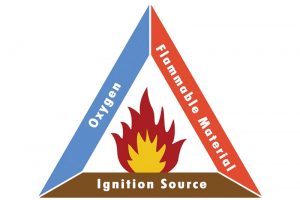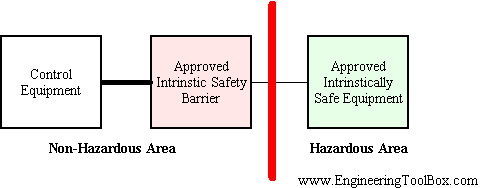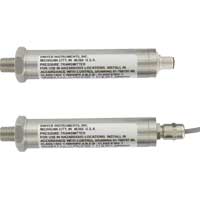Intrinsically Safe Products for Hazardous Locations
Intrinsically Safe Products for Hazardous Locations
When considering a product for a hazardous location, it is important that the product is appropriately rated for that environment. UL, one of the primary bodies that certifies products for use in hazardous environments, defines a hazardous location as a “location where explosion or fire hazards exist due to the presence of flammable gases, flammable or combustible liquid-produced vapors, combustible dusts, or ignitable fibers or flyings.”[1] Figure 1 (right) shows the conditions that are required to create fire and are often present in hazardous environments: oxygen, an ignition source, and flammable material.

There are three ways to make products safe for a hazardous environment:
- First, break the triangle by eliminating one of the conditions (this doesn’t really count, though, because if one of the factors is removed the environment can no longer be considered hazardous).
- Second, the product can be enclosed in a box that’s designed to prevent explosions, thus making the product explosion proof.
- Third, the energy factors can be controlled by designing a product that can’t produce energy, which makes the product intrinsically safe. This post will focus on the third option, intrinsic safety.

As you can see in Figure 2 (above), an intrinsically safe product is located within a hazardous area and connected to an intrinsically safe barrier outside the hazardous area. In order for a product to be intrinsically safe, it must be installed with a barrier. The barrier helps to regulate the input power to the unit in order to prevent an explosion. If the input voltage exceeds what the product needs to function, the diode in the barrier grounds the voltage to prevent it from re-entering the hazardous area.
There are two types of barriers that can be used with intrinsically safe products: galvanic and zener. A galvanic barrier is best for long term applications because it can withstand multiple surges. Zener barriers, on the other hand, are much less flexible.

Dwyer Submersible Level Transmitters, Series PBLTX and SBLTX, as well as the Intrinsically Safe Pressure Transmitter, Series IS626, are UL approved intrinsically safe for use in hazardous locations when used with the proper barrier. UL has multiple categories to explain which products are suitable for different environments. Basically, there are two divisions, three classes, and seven groups (which depend on the class) that get increasingly specific.
With a Division 1 classification, there is a risk of combustion under normal operating conditions, while with Division 2 combustion is not likely in normal conditions. The three classes organize combustible material by type, while the groups further divide the combustible materials. There are 4 material groups for Class I and 3 material groups for Class II. For more information on UL’s categorization system, see the UL website. By understanding the demands of a hazardous environment and the UL rating system, you can be confident you are choosing an intrinsically safe product for your application.
